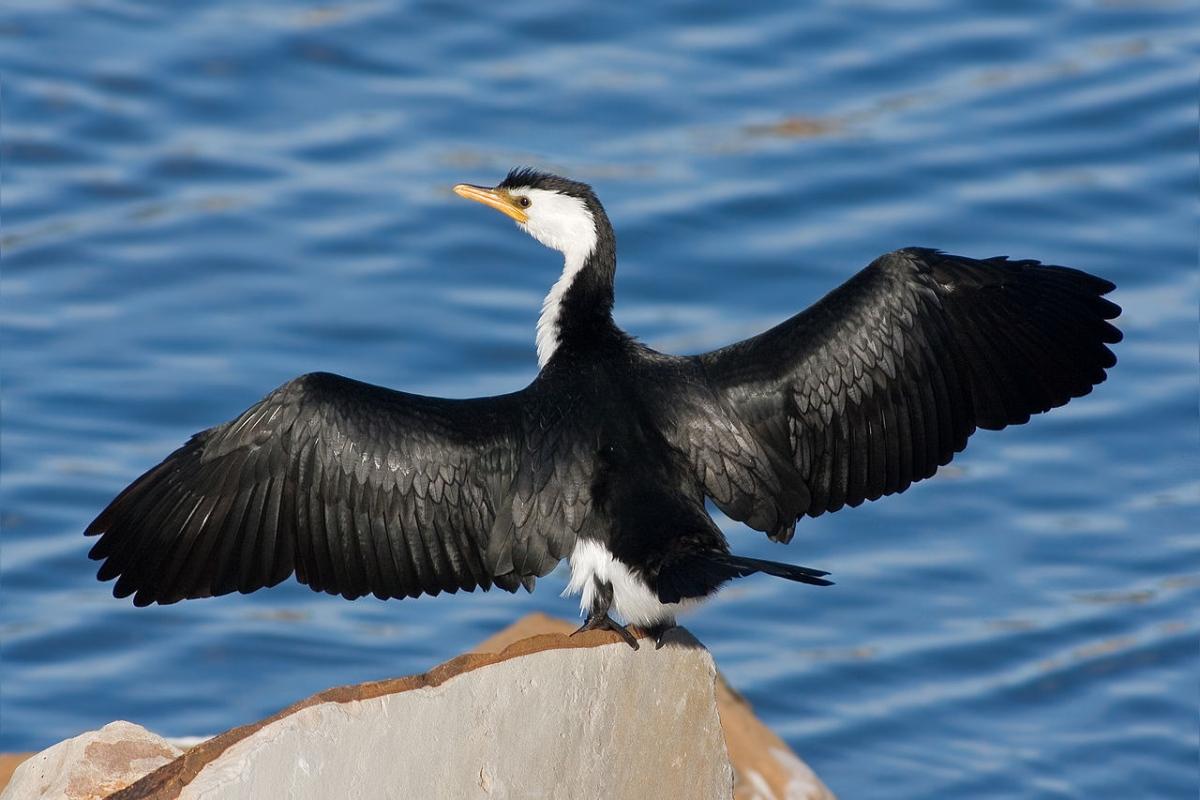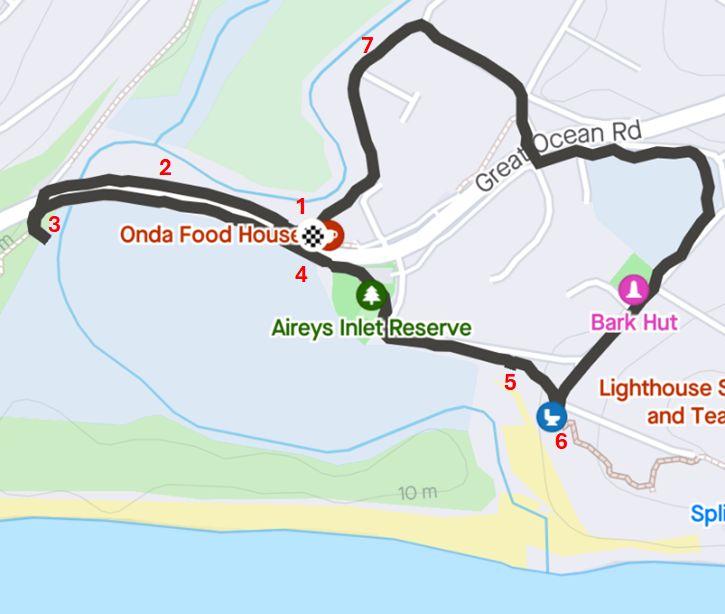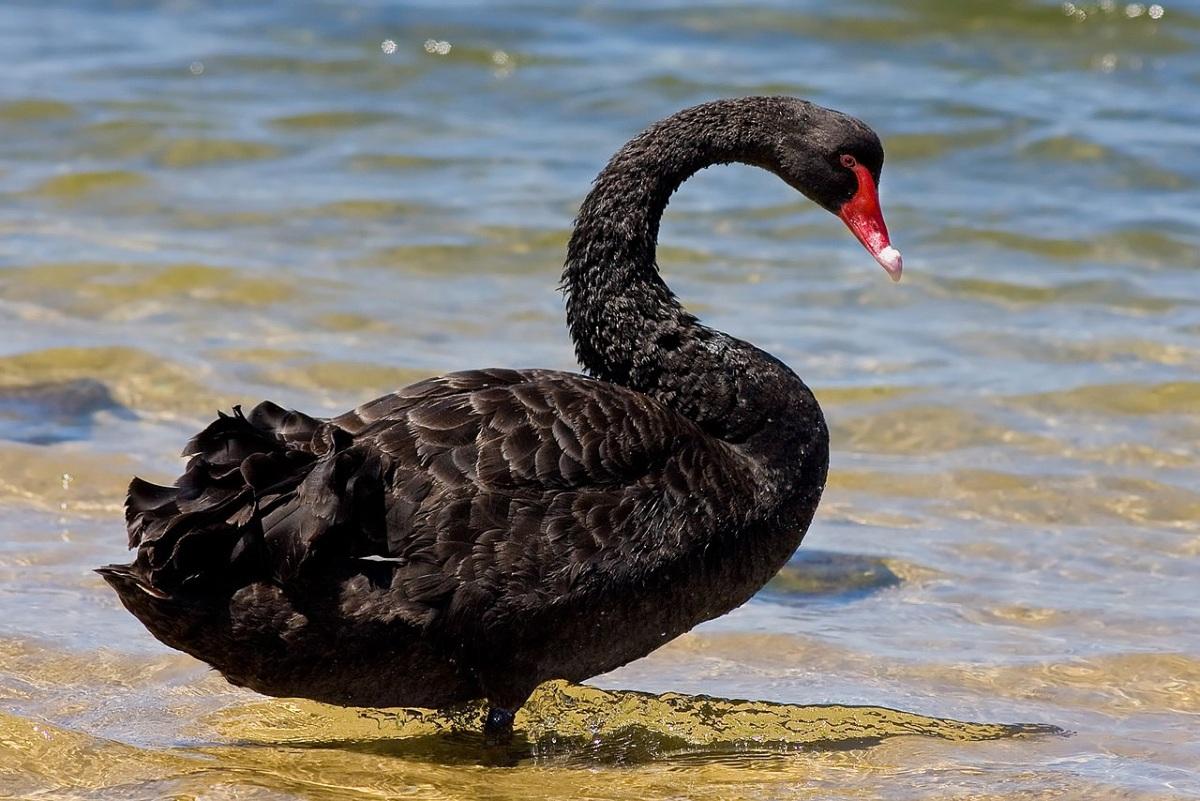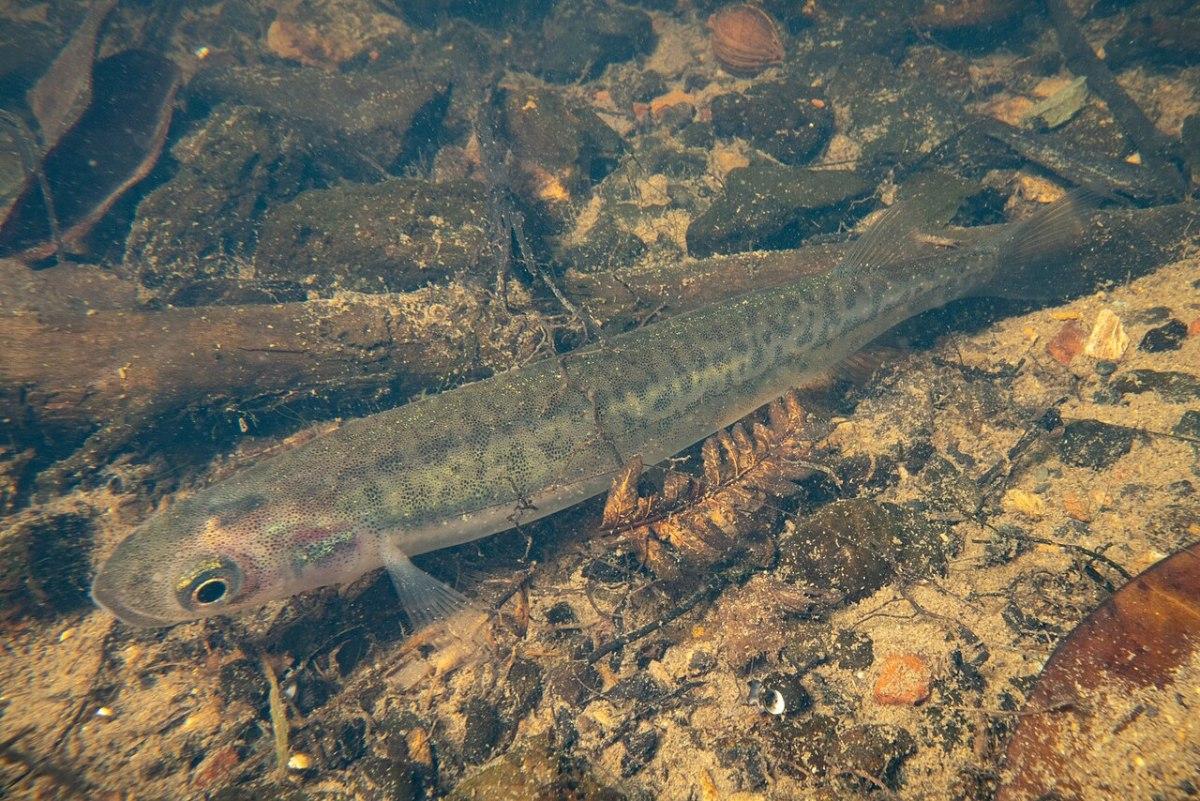A Haven for Feathers and Fins: The Birds and Fish of the Painkalac Estuary
The Painkalac Estuary is a vibrant tapestry of life, teeming with a remarkable diversity of birds and fish. This ever-changing environment, with its fluctuating water levels, exposed mudflats, and adjoining wetlands, provides a perfect haven for a variety of fascinating creatures.
Walk down to the first lookout or back up on to the bridge to admire the birds you can see.

Great Egret

Little Pied Cormorant (Photo by JJ Harrison CC BY)

White-faced Heron (Photo by JJ Harrison CC BY)
Fish
Some fish such as Black Bream and Estuary Perch can spend all their life in the brackish waters of Painkalac Estuary. Other fish such as eels and galaxiids, migrate between the freshwater, estuarine and marine environments at different time of the year.

Estuary Perch
Watch a swarm of Short-finned Eels congregating at the mouth of the Painkalac Creek before the estuary opening, ready to start their journey to the Coral Sea near New Caledonia where they spawn.
An epic journey defines the Short-finned eels of Painkalac Creek. Born in the Coral Sea 3,000 km away, these incredible creatures travel vast distances. As tiny transparent larvae, they follow currents south, then drawn by traces of freshwater and find their way into estuaries.
Here, they transform into elvers and embark on an upstream trek, wriggling up drains and even across land to find suitable freshwater habitats. There, they spend up to 20 years hunting frogs, crustaceans, insects and fish by night, maturing before their breeding instinct kicks in.
Adults then undertake a final, arduous journey back to the Coral Sea to spawn, dying after fulfilling their life cycle but the life cycle begins again.
The First Nations Peoples intimately understood the eels’ life cycle. They could predict migrations and used woven reed nets and stone barriers to trap eels’ eating them fresh, smoking them in tree hollows to preserve them, or transferring them alive to fatten in ponds. Eels were valuable trade items. Eel harvests brought people together for feasts, celebrations, marriage, trading of tools and sitting of their council.
Continue down the path on the ocean side of the Great Ocean Road back towards the Aireys Inlet Reserve with the playground and skate park. The next sign with a QR code is just before the Reserve on your right (number 4 on the map).

Map of nature walk with interpretive signs marked by numbers


